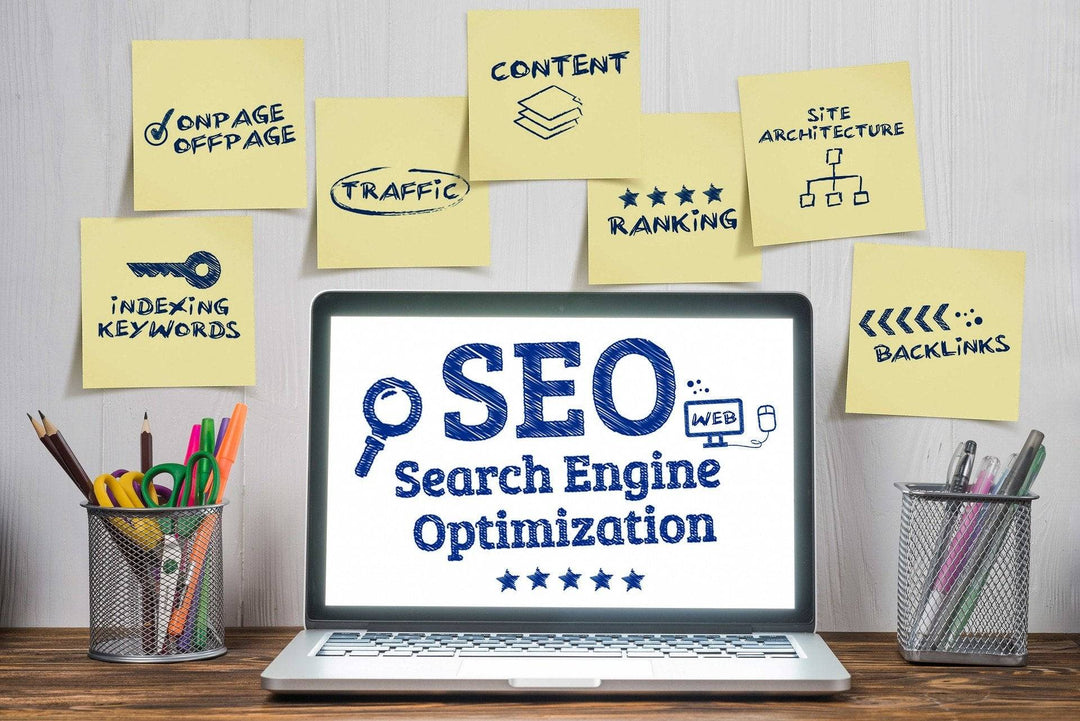Google found more than 56% of ad impressions are never seen by consumers, and Proxima estimates $37 billion of worldwide marketing budgets are being wasted on poor digital performance, and that’s just digital.
Digital pollution is a growing problem that can have serious consequences for businesses and their audiences. In an age where we are constantly bombarded with information, it's more important than ever to be selective about the content we share and make sure it is simple, engaging, and relevant.

The problem with digital pollution is that it can overwhelm and distract our audiences, making it difficult for them to focus on what's important. The Consequences of Digital Pollution can include decreased attention spans and reduced productivity.
Fortunately, there are ways to avoid digital pollution and focus on your audience. Be Selective with Your Content by sharing only what is necessary and relevant. Keep it Simple by avoiding unnecessary clutter. And Make it Engaging by using images, video, or other interactive elements to capture your audience's attention.
By following these tips, you can avoid digital pollution and ensure that your content is seen and appreciated by your audience.
Read More: 4 CLEVER HACKS TO CONVERT PRODUCT PAGES INTO SOLUTION PAGES THAT SELL
What is Content Pollution?
The internet today is a vast ocean of information, with millions of websites and pages. It can be difficult to find the best source for information on any topic.
Content pollution is the increasing number of websites that exist, each creating its own content and thus making it harder for users to find quality information. Content pollution is everywhere. It's in your inbox, on social media and in the news.
It tends to be a distraction, misleading or doesn't add value to your audience. It could be irrelevant or untargeted content that doesn't help you achieve your goal.
It can happen on the web where users are faced with too much information and don't know where to start reading or how long they should spend on each article. If you're trying to find an answer, then you might get distracted by other articles that look interesting or make sense as well—and before long, your brain feels like it's swimming in data!

The Consequences of Content Pollution
The consequence of content pollution on Internet is that the internet user faces an environment where the information is being flooded with irrelevant and inappropriate contents. This leads to a situation where users are not able to digest the actual information and instead are forced to search for it, which may take much more time than usual. Thus, this can result in loss of productivity, especially among those who work from home or have more time on their hands.
Content pollution also has another negative effect on internet users. It has been found that when there is too much traffic on a particular website, it will slow down the speed of loading pages by up to 50%. This is because all of these unnecessary requests are taking up bandwidth and slowing down other users who want access to the same websites. Thus, it becomes difficult for everyone to get access to websites at their own pace.
How to Avoid Digital Pollution?
Consumers are becoming highly proactive in using the online medium. At the same time, they are also ’very concerned about the relevance and quality of content being uploaded on several platforms. Content duplication is one of the problems. Many brands are mimicking content rather than creating original content that creating content that provides value to the consumers. So, it’s high time to analyze what your consumers think about your brand messaging and create content that are unique and stands the test of time.
Here are some crucial things you must take care of:
Be Selective with Your Content
The first step to avoiding digital pollution is being selective with your content. Not all information needs to be shared with your audience, and in fact, sometimes it’s best to keep certain things to yourself. When in doubt, ask yourself if the information you’re about to share is truly necessary or relevant to your audience. If not, consider omitting it from your message.
In addition to being selective with the content you share, you should also pay attention to the way in which you share it. The tone of your message can say a lot about you and your brand, so be mindful of how you come across to avoid coming off as insensitive or unprofessional.
You won't ever succeed in your brand's content marketing objectives if you don't distribute your material wisely. It's reasonable that you might be perplexed about which online and offline marketing channels would be most advantageous for your company given the wide range of options accessible. To maximize your company's growth, you must concentrate on the appropriate channel or channels.
But how can you know which channels are the best?
These questions will aid you to find the right distribution channel
Whom are you trying to reach?
How do you find them?
Where is your competition?
Is there a chance to employ a unique channel that nobody else in your market is using?
How many channels can you successfully run at the same time?
So, in a nutshell, You can choose the most effective way to distribute that material if you pay attention to your audience and understand their needs. first, you need to understand who the content is for and what it's aim is to do for them. Knowing the intentions of your audience members can help you create content that will have the biggest impact on them.
Recommended Reading: BOOSTING SITE TRAFFIC WITH STRATEGIC BLOGGING: A CASE STUDY OF YINZERSHOP & GOKIMCO

Keep it Simple
Keeping your content simple is another great way to avoid digital pollution. When creating messages, resist the urge to pack them full of unnecessary details or jargon that your audience may not understand. Instead, focus on delivering your message in a clear and concise manner that will be easy for them to digest.
If you find that your content is starting to feel “cluttered”, take a step back and see if there’s anything you can remove or simplify. Oftentimes, less is more when it comes to effective communication.
Make it Engaging
Last but not least, make sure that your content is engaging! If your audience is not interested in what you have to say, they’re likely tune out or even unsubscribe from your channel altogether. So how can you keep them engaged?
One way is by mixing up the types of content you share. In addition to traditional blog posts or articles, try incorporating videos, infographics, or even interactive quizzes into your mix. And don’t forget about social media – using platforms like Twitter and Instagram can help make your content more visually appealing and engaging for users scrolling through their feeds.. Another great way engage your audience is by responding to their comments and questions. This shows that you’re listening to them and value their input, which will make them more likely to stick around.
By following these tips, you can avoid digital pollution and focus on creating content that your audience will actually want to consume.

Relevant Reading: BIG DATA IS THE FUTURE OF ECOMMERCE MARKETPLACE
Say Goodbye to Content Pollution
Content pollution is a growing problem that can have negative consequences for both businesses and their audiences. To avoid content pollution, businesses should be selective with their content, keep it simple, and make it engaging. By taking these steps, businesses can focus on their audience and avoid turning them away with digital pollution.
Strategy and well researched content calendar are what help you lead ahead. All you need to do is kickstart start planning. At eComIntegrate, we help you with stellar content creation service that help you stand out o the competition.
[nerdy-form:11564]






Leave a comment